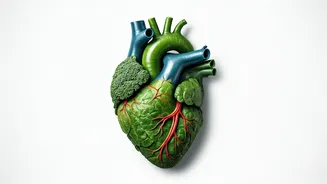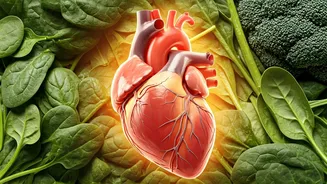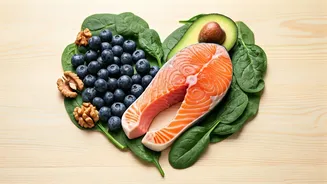Vitamin K: Key Nutrient
Vitamin K is a fat-soluble vitamin that is often overshadowed by other vitamins, yet it is essential for human health. It exists in two primary forms:
Vitamin K1 (phylloquinone), predominantly found in leafy green vegetables, and Vitamin K2 (menaquinone), which is synthesized by bacteria in the gut and also present in fermented foods and animal products. Both forms play crucial roles, with Vitamin K1 primarily involved in blood clotting and Vitamin K2 contributing to bone health and cardiovascular well-being. Furthermore, Vitamin K supports the activation of proteins that regulate calcium, preventing its buildup in arteries and promoting its incorporation into bones. Understanding the significance of Vitamin K can empower individuals to make informed dietary choices and optimize their overall health.
Types of Vitamin K
Vitamin K is not a single entity but rather a group of compounds, with the two most important being Vitamin K1 (phylloquinone) and Vitamin K2 (menaquinone). Vitamin K1, abundant in plant-based sources like spinach, kale, and broccoli, is critical for blood coagulation. It enables the liver to produce clotting factors, preventing excessive bleeding. Vitamin K2, on the other hand, comes in several subtypes (MK-4 to MK-13), with MK-4 and MK-7 being the most studied. MK-4 is found in animal products, and MK-7, derived from bacterial fermentation, is present in fermented foods like natto. Vitamin K2 is instrumental in directing calcium to the bones and away from arteries, thus supporting bone density and cardiovascular health. Each form of Vitamin K has distinct roles, and consuming a variety of food sources ensures a balanced intake for overall health and well-being.
Vitamin K's Benefits
The benefits of Vitamin K extend far beyond its well-known role in blood clotting. This essential vitamin is a key player in maintaining robust bone health and supporting cardiovascular function. Vitamin K2 activates proteins like osteocalcin, which helps bind calcium to bones, enhancing bone density and reducing the risk of fractures. Simultaneously, Vitamin K helps prevent calcium from accumulating in the arteries, thereby reducing the likelihood of arterial plaque formation and promoting healthy blood flow. Emerging research suggests Vitamin K might also contribute to improved insulin sensitivity and may play a role in brain health. Incorporating Vitamin K-rich foods into your diet is, therefore, a proactive step toward fortifying overall health and preventing various age-related ailments.
Deficiency Signs & Symptoms
While Vitamin K deficiency is relatively rare in adults, it can have significant health implications. The primary signs of deficiency relate to impaired blood clotting, with symptoms including easy bruising, prolonged bleeding from minor cuts, and heavy menstrual periods. In severe cases, internal bleeding may occur. Another symptom can be the presence of blood in the stool or urine. Newborns, particularly those not receiving Vitamin K injections at birth, are at a higher risk of deficiency. Vitamin K deficiencies may be observed in individuals with conditions that impair nutrient absorption, such as Crohn's disease or cystic fibrosis, and those on long-term antibiotic therapy, which can disrupt the gut bacteria responsible for Vitamin K2 synthesis. Recognizing these signs allows timely medical intervention.
Dietary Sources of K
Incorporating Vitamin K-rich foods into your diet is crucial for maintaining optimal health. Excellent sources of Vitamin K1 include leafy green vegetables like spinach, kale, collard greens, and broccoli. A single serving of these vegetables can often fulfill your daily requirements. Vitamin K2, on the other hand, is found in animal products such as egg yolks, liver, and some cheeses, as well as fermented foods like natto. Though harder to find than Vitamin K1, it’s worth including these sources for their particular benefits. Varying your diet ensures you get a good balance of both Vitamin K1 and K2. Supplements are also available, but it's always best to obtain nutrients from their natural food sources whenever possible.











